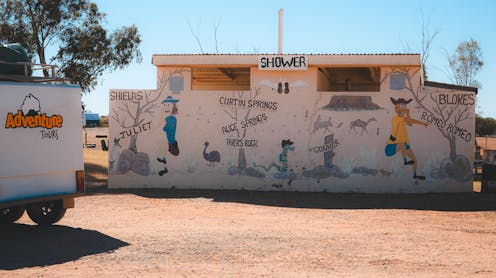Crikey, ChatGPT’s gone bush! How AI is learning the art of Aussie slang
- Written by The Conversation

Ever tried to explain why a sausage would be referred to as a “snag” while overseas, or why the toilet is the “dunny”? If you found this challenging, spare a thought for large language models (LLMs) such as ChatGPT, which have to contend with slang terms from all over the world.
Is it possible for AI to decipher the strange “code” that is Australian slang, given all the nuance and cultural references loaded into it?
Cracking the code
LLMs don’t “understand” language like we do. Rather, they are trained on massive quantities of online text data (including websites, news articles and books) to learn patterns between words. They can then mimic these patterns to produce human-like responses.
So it follows that unless AI systems can mingle with people in informal real-world settings – or can access TV shows such as Kath and Kim – they’re unlikely to grasp the finer points of our real-world conversations.
Take words such as “cooked” and “random”, which can have different meanings in different contexts. Or consider the phrase “flat out like a lizard drinking”. What could it mean? Is the speaker comparing themselves to a thirsty reptile sprawled out under a dripping tap?
The phrase actually refers to being very busy, by using the visual metaphor of a lizard’s fast-moving tongue. While an AI may not make this connection, many people living in Australia will have a lifetime of experience that helps them understand the message being conveyed.
To further complicate matters, Aussie slang continues to evolve, and doesn’t always follow the rules of grammar and structure.
Slang phrases tend to follow a looser sentence structure and are often filled with idioms, metaphors, abbreviations and culturally-specific humour. Australian language expert Roland Sussex estimates we use more than 5,000 abbreviations and diminutives.
Slang also changes from one generation to the next. For instance, one 2010 study suggests older Australians are more likely to shorten words with an “ie” or “o” sound, such as “truckie” instead of “truck driver” and “ambo” instead of ambulance. Young Australians, meanwhile, are more likely to clip words or add an “s”, such as “mobes” for mobile phone.
Are we there yet?
Can AI chatbots learn Aussie slang? There is evidence many are already developing a broad understanding of the most frequently used terms and their current interpretations.
For example, “give it a crack” and “mozzie” are both understood by Amazon’s Alexa.
In 2021, Alexa partnered with local celebrity Sophie Monk and comedy duo The Inspired Unemployed to incorporate a large collection of Aussie slang into its vocabulary. The personal AI assistant even comes with an Aussie accent feature.
Keeping up-to-date with changing Aussie slang terms, interpretations and regional dialects is a resource-intensive undertaking. Nonetheless, ChatGPT and other LLMs have made progress on this front, as this example shows:







